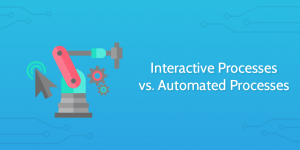
Customer success managers (CSMs) are entrusted with retaining customers and optimizing their experience–a broad mandate that can look dramatically different between companies depending on industry, size, and culture. As the first customer success hire in a rapidly growing company, I’ve seen the role evolve and have learned through experience (and often hindsight) key practices to navigating the unique challenges of operating in a small, growing company.
What makes customer success in a small company unique?
Relative to large organizations, young companies are faced with the following situation:
- As a new entrant in the market, you lack brand recognition
- Your clients are early adopters
- Product and engineering development is happening in parallel to customer activation
- Resources are tight. Very tight.
Given the situation, how can you set yourself up for success? Here are 6 best practices to get you on the right path. The list is certainly not an exhaustive, and is put together based on experiences from myself and a number of other CSMs in early stage and high growth start-ups. Note these are ordered according to the customer journey, rather than importance.
6 Best practices for CSMs in small, growing companies:
- Get involved in the sales phase
Without brand recognition, there’s a good chance your sales team had to throw in the kitchen sink to make the first sales. Make sure there is a clear, attainable definition of what success looks like, and ensure all non-negotiable details (such as compliance) are captured in the handoff of the account from the sales team. Uncovering requirements too late could cost valuable time and money for the company.
Also, leverage your sales team’s client intel to make an org chart of key players–not the traditional org chart of names and roles, but identify who are your champions, skeptics, and influencers. Knowing key players will help you in achieving organizational buy in early on and will help make adoption of your product much easier.
- Create a feedback loop between the product team and client
As early adopters, your client is likely to push for customizations and give active feedback. Work with product to create a framework for compiling and evaluating customer requests. Even small customizations could impact the global product. As the first sensor of all client requests, make sure you’re asking the right questions: drill down to the use case–not a feature–to inform product and best serve your customer.
- Internalize an ethic of responsiveness and urgency
Startups don’t have the communication overhead of a large company, so responsiveness is one of your company’s greatest asset. Strive to promptly and correctly resolve open items. There will be bugs, and that is expected. However, don’t be tempted to wait for a resolution before getting back to the client–if a bug takes longer than expected to fix, keep the customer informed. If your client is frustrated, lend a patient ear and follow up with a plan to prevent future occurrences.
Remember you are setting the pace for the relationship. For every component, from scope definition to launch, operate with a sense of urgency for your and the client’s team. While customer-side project delays might be accepted–even welcomed–by your thinly staffed engineering team, losing client momentum could cost you an account.
- Invest in strong relationships
More often than not, the decision to renew an account is an emotional one. Beyond renewals, customer referrals attract future business and build your brand. In addition to delivering a quality product experience, make a personal effort, wherever possible and reasonable. Unlike large companies, small companies won’t likely have a travel budget for CSMs. Find creative ways around this, such as using video conferencing or sending personal notes with client gifts.
- Organize yourself in a scalable way
Many customer success teams don’t have a leader until they hit critical mass with accounts, so finding a scalable and systematic way to organize your growing account list is essential. You should be able to prioritize accounts by business value, stage, and health so you know where your attention needs to be when time and resources are limited.
- Build institutional knowledge
Don’t let your efforts go to waste! Make sure you are capturing learnings for future clients and the next generation of CSMs. Adopt a document versioning system and set of templates to save you time on common tasks. Share your findings across the organization–particularly back to the sales team so they can keep current on the latest in a rapidly changing company.
Somewhere in your 20 hours of meetings, Gantt charts, JIRA tickets, and status reports, take a moment to appreciate what you’re building. This is the most exciting time for a company, and you are instrumental in your organization’s success. Be proud of your work and enjoy the adventure!
Business & Finance Articles on Business 2 Community
(69)
Report Post





